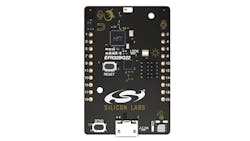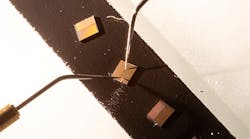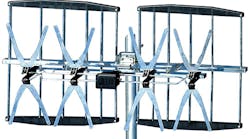Platform Props Up Prototyping with IoT SoCs for Energy-Harvesting Apps
The Overview: A Development Kit for BLE IoT SoCs
A development kit borne of a collaboration between Silicon Labs and e-peas makes it easier to create concepts and build rapid prototypes of what’s now termed “ambient IoT” devices. Silicon Labs’ EFR32xG22E Explorer Kit features a USB interface, an on-board SEGGER J-Link debugger, an LED and button for a UI, and support for add-on hardware boards via a mikroBus socket and Qwiic connector.
Who Needs It & Why: Smart-Home and Building Apps
IoT devices prototyped with the SiLabs Explorer Kit will have applications in Zigbee-connected smart-home settings, such as doors, faucets, and switches. Similar uses might be found in smart buildings, using kinetic-pulse power harvesting for doorknobs and light switches. And, indoor solar-powered TV remotes and computer keyboards that have need of energy-efficient Bluetooth LE SoCs.
Such devices might also be used in tire-pressure monitor sensors, asset tracking, electronic shelf labels, factory automation, predictive maintenance, and agriculture.
Under the Hood: Wireless SoCs for Energy Harvesting IoT Devices
The kit is intended for use with the company’s xG22E family of wireless SoCs, notable for their ability to operate within the ultra-low-power envelope demanded of battery-less energy-harvesting applications. Touted as the company’s most energy-efficient SoCs to date, the BG22E, MG22E, and FG22E devices serve Bluetooth LE, 802.15.4-based or proprietary 2.4-GHz applications.
>>Check out this TechXchange for similar articles and videos
e-peas contributed the energy-harvesting shields for the kit. Each of the shields, tuned for different energy sources and energy-storage technologies, are custom-fit to slot onto the SiLabs Explorer Kit. One enables experimentation with alternative battery chemistries and supercapacitors. A second is geared for kinetic/pulse harvesting and uses e-peas’ AEM0300 power-management IC (PMIC) for power buck. The third shield, which employs e-peas’ AEM13920 PMIC, allows for experimentation with dual power-harvesting sources simultaneously.
Related links:







